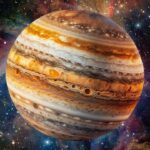
📷 Image Credits: WION
Boeing’s CST-100 Starliner successfully launched two NASA astronauts, Suni Williams and Butch Wilmore, to the International Space Station (ISS) on June 5, marking the spacecraft’s first crewed flight to orbit. The mission, part of NASA’s Commercial Crew Program, aims to validate the transportation system, spacecraft capabilities, and in-orbit operations for future missions to the ISS. Initially planned for a week-long stay, the mission has been extended until June 22 to finalize departure operations and conduct crucial thruster tests. During the Starliner’s final approach to the ISS on June 6, some thrusters experienced issues, prompting the need for additional evaluations.
One of the highlights of the mission was captured by ISS astronaut Matthew Dominick, who shared breathtaking footage of the aurora borealis behind the Starliner. The timelapse video, taken from SpaceX’s Crew Dragon spacecraft docked with the ISS, showed the aurora filling the sky as astronauts performed vital tests inside the Starliner. Dominick’s footage also showcased the aurora seemingly emanating from the spacecraft itself, creating a stunning celestial backdrop for the Starliner’s operations.
As the Starliner continues its mission, Boeing and NASA teams are closely monitoring the spacecraft’s maneuvers from respective mission control centers in Houston. The successful test flight is a significant milestone for NASA’s Commercial Crew Program and represents over a decade of collaboration between the agency, Boeing, and United Launch Alliance. Once certified, the Starliner will join SpaceX’s Crew Dragon as a reliable vehicle for transporting astronauts and cargo to the ISS.
NASA astronauts Butch Wilmore and Suni Williams, both experienced space travelers, will conduct various tests during their time on the ISS, including assessing the spacecraft’s environmental control system and piloting capabilities. The extended mission will provide valuable data for future crewed missions to the ISS and contribute to the long-term goal of having Starliner perform six-month docked missions at the space station.
The successful launch and ongoing mission of the Starliner demonstrate NASA’s commitment to safe, reliable, and cost-effective access to low Earth orbit and the ISS through commercial partnerships. As the space agency prepares for future exploration missions to the Moon and eventually Mars, the Commercial Crew Program paves the way for continued human presence in space and opens new opportunities for scientific research and commercial ventures.







